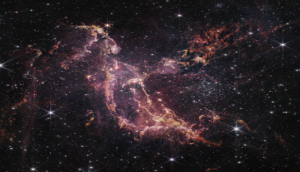
Turns out, humans don't use as much brainpower as we think.
For years, scientists assumed that humans devote a larger share of their daily calories to their brains than other animals. The human brain makes up only 2 percent of body weight, but it consumes more than 25 percent of our baseline energy budget.
However, a recent Duke University study comparing the relative brain costs of 22 species found that, when it comes to brainpower, humans aren't as exceptional as we like to think.
Study author Doug Boyer noted, "We don't have a uniquely expensive brain," adding that this challenges a major dogma in human evolution studies.
Because energy travels to the brain via blood vessels, which deliver a form of sugar called glucose, the researchers measured the cross-sectional area of the bony canals that enclose the cranial arteries.
By coupling these measurements with previously published estimates of brain glucose uptake and internal skull volume as an indicator of brain size, they examined seven species, including mice, rats, squirrels, rabbits, monkeys and humans. The researchers were able to show that larger canals enclose arteries that deliver more blood, and thus glucose, to the brain.
Then, using a statistical technique called multiple regression, they calculated brain glucose uptake for an additional 15 species for which brain costs were unknown, including lemurs, monkeys and treeshrews, primate relatives from Southeast Asia.
As expected, the researchers found that humans allot proportionally more energy to their brains than rodents, Old World monkeys, and great apes such as orangutans and chimpanzees.
Relative to resting metabolic rate - the total amount of calories an animal burns each day just to keep breathing, digesting and staying warm - the human brain demands more than twice as many calories as the chimpanzee brain, and at least three to five times more calories than the brains of squirrels, mice and rabbits.
But other animals have hungry brains too.
In terms of relative brain cost, there appears to be little difference between a human and a pen-tailed treeshrew, for example.
Even the ring-tailed lemur and the tiny quarter-pound pygmy marmoset, the world's smallest monkey, devote as much of their body energy to their brains as we do.
The results suggested that the ability to grow a relatively more expensive brain evolved not at the dawn of humans, but millions of years before, when our primate ancestors and their close relatives split from the branch of the mammal family tree that includes rodents and rabbits, Harrington said.
What the data can't show is whether energetically expensive brains evolved first, and then predisposed some groups of animals to greater mental powers as a byproduct, or whether preexisting cognitive challenges favored individuals that devoted more energy to the brain, the researchers concluded.
The study appears in the Journal of Human Evolution.
-ANI







![BJP's Kapil Mishra recreates Shankar Mahadevan’s ‘Breathless’ song to highlight Delhi pollution [WATCH] BJP's Kapil Mishra recreates Shankar Mahadevan’s ‘Breathless’ song to highlight Delhi pollution [WATCH]](https://images.catchnews.com/upload/2022/11/03/kapil-mishra_240884_300x172.png)

![Anupam Kher shares pictures of his toned body on 67th birthday [MUST SEE] Anupam Kher shares pictures of his toned body on 67th birthday [MUST SEE]](https://images.catchnews.com/upload/2022/03/07/Anupam_kher_231145_300x172.jpg)






